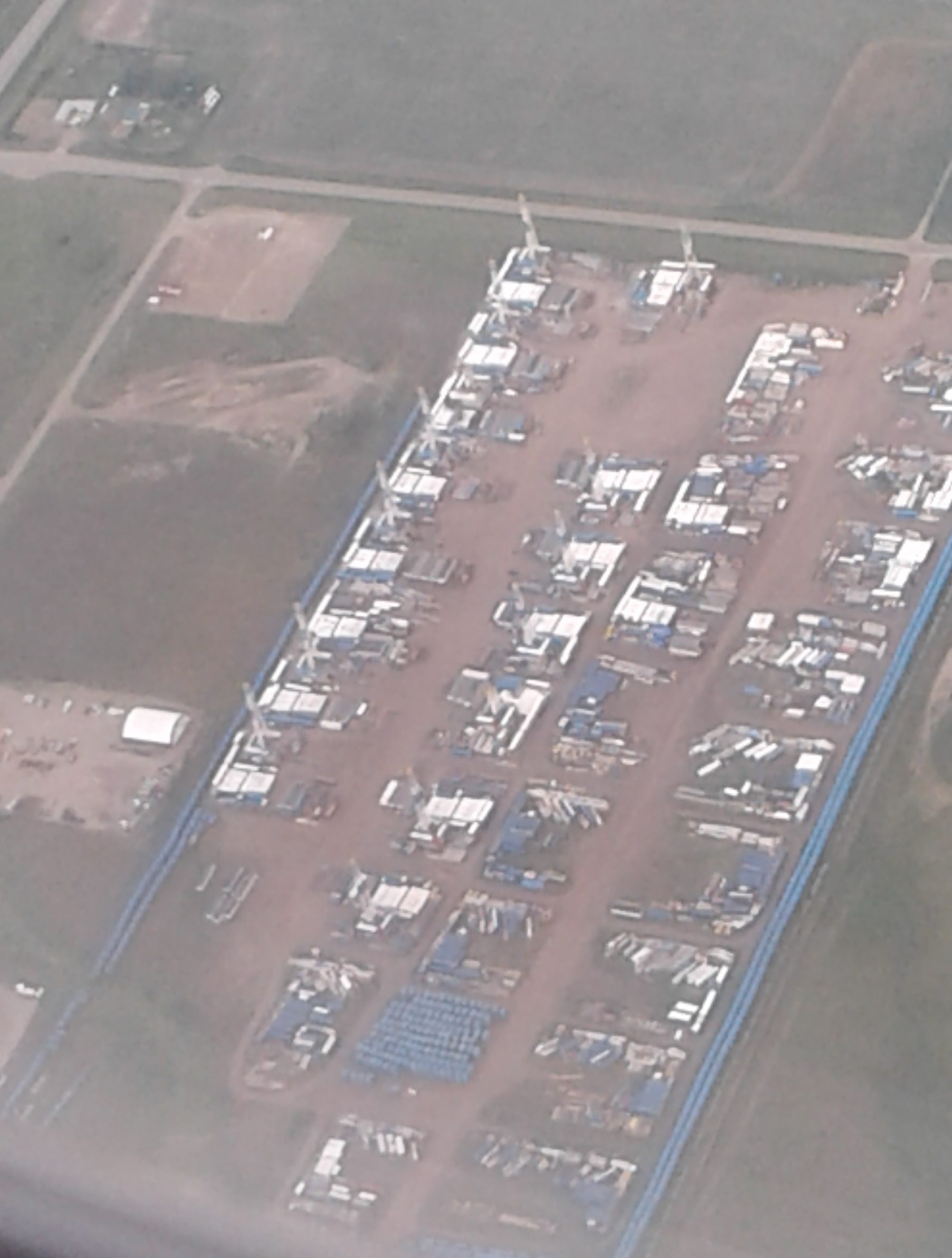
Crude oil production in the state dropped to 858K bopd in May, which is a 362K bopd drop for the month and a 661K bopd drop since the record high of 1,519K bopd in November 2019.
Price of oil also collapsed, which means the value of production shrank.
Graphs of monthly production and prices can be seen in previous post.
Check out my calculation of the value of monthly production the combination of dropping output and dropping prices:
Just as a guess, I think production could be opened up almost as fast as it was cut back. More on that thought at the end of this post.
Activity counts
As a result of the powerful price signals, drilling activity shrank as well. Comments in the Director’s Cut for May 2020 say the number of completion teams has dropped from 25 to 1 at the moment..
As expected the number of rigs in operation and the number of completed wells has collapsed:
It looks like producers are pulling a lot of wells out of production, putting them into an active inactive status. In addition wells that are still producing are pumping less. Apparently there is a risk of structural damage when wells are not producing at all. The option to prevent that damage would be to turn off pump jacks a day or two at a time, only pumping oil one day out of every two or four days.
Pulling back production of each well in operation can be seen by the average daily barrels per well dropping from 108 bopd in October and November 2019 to a 76 bopd in May. For all the producing wells in the state that is an average drop of 32 bopd. That is a 29.6% drop in average production per day.
The number of producing wells has dropped:
The number of inactive wells has skyrocketed, essentially tripling in just one month:
Dialing production up.
One amazing thing about this dramatic change is that many factors went into the drop in production:
- drilling crews were laid off,
- completion crews were laid off,
- drilling rigs were pulled off site and parked,
- some wells went to inactive status, and
- many wells were pumping at far less than capacity.
As a thought experiment, consider how rapidly the things which were turned off could be turned back on:
- producing wells could increase production in a day,
- inactive wells can be brought back online quickly,
- those parked rigs could be moved to a site and start drilling in several days,
- workover rigs and completion equipment could be on site within days,
- completion and drilling crews haven’t all gone back home so those still in the area could go back to work in a few days, and
- it is unlikely those workers who left the state have found more work and would be very responsive to a call to get back to the field.
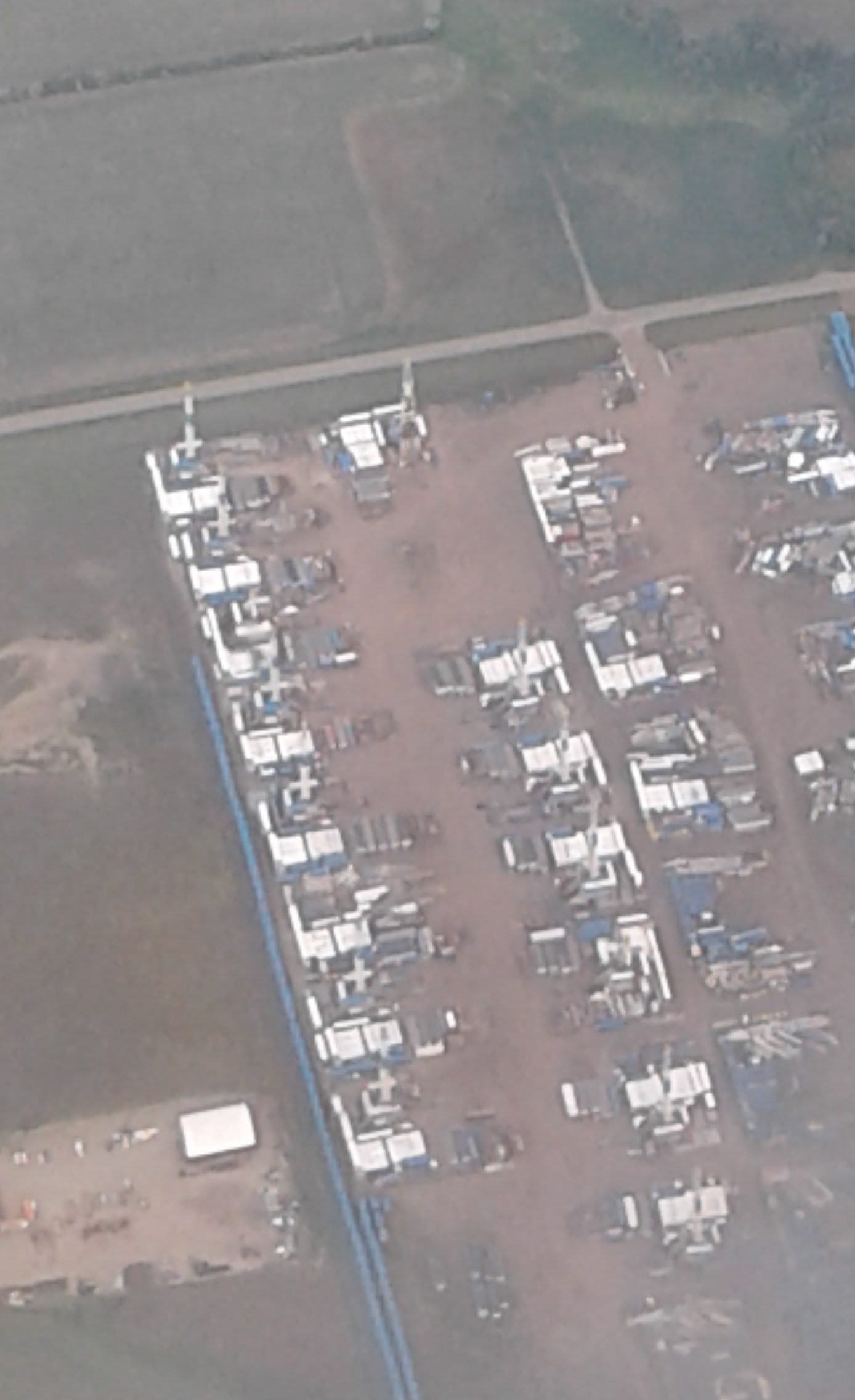
Just as a completely wild, barely-educated guess, I think production could ramp up half a million barrels a day within a month or so.
Take another look at the photos of parked rigs. There are about 17 drilling rigs parked on the west side of Williston in just one field. I hear tell there is another field of parked rigs outside Williston as well.
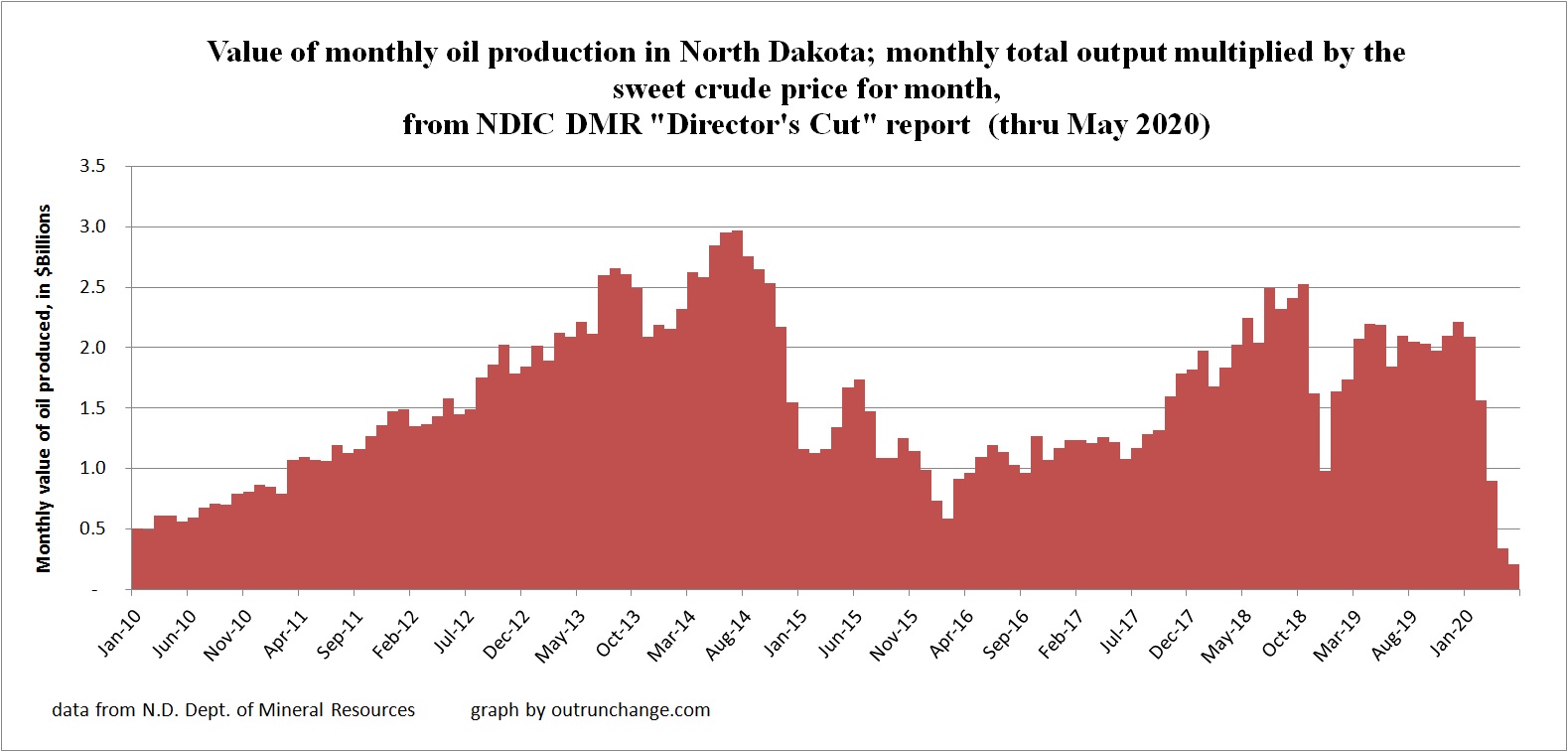
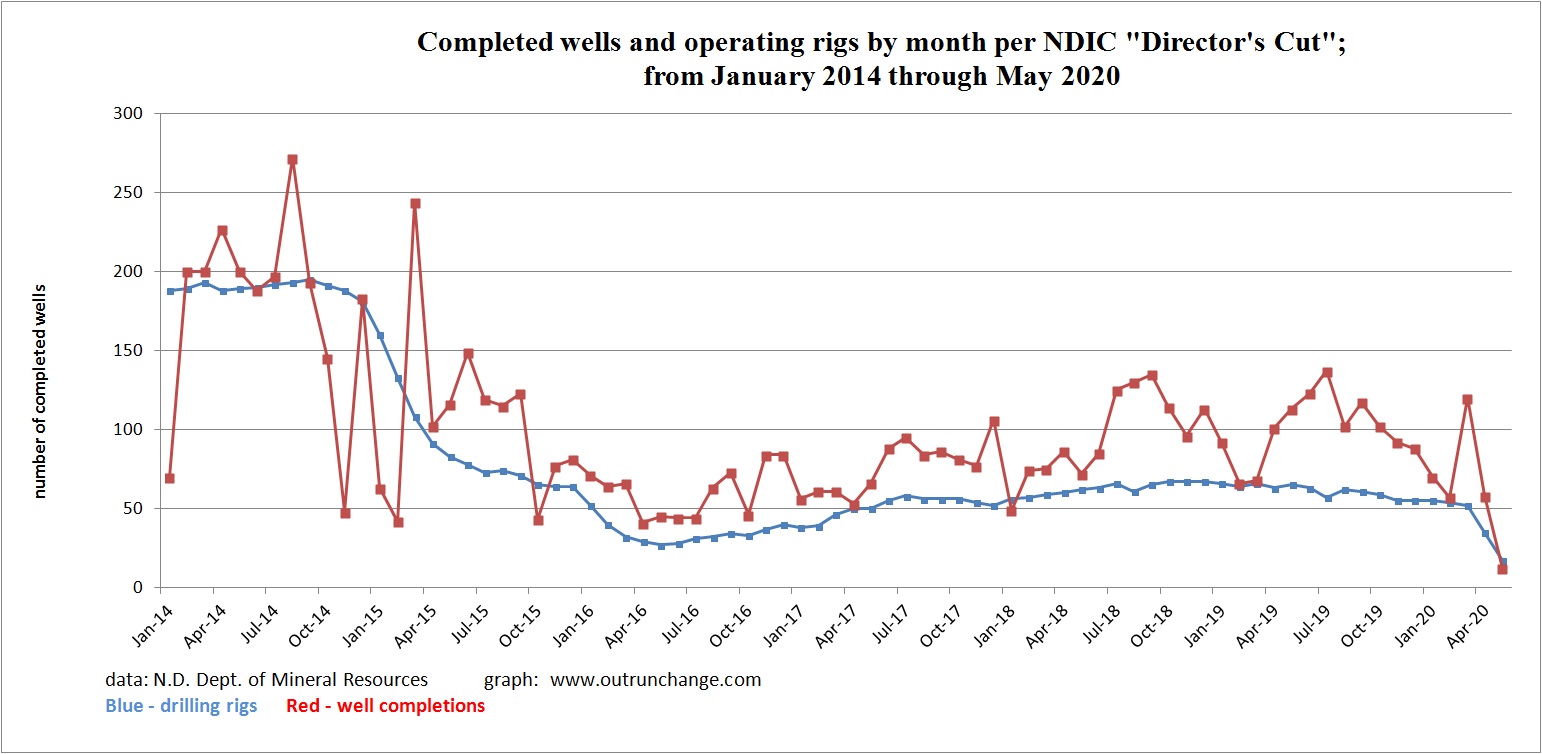
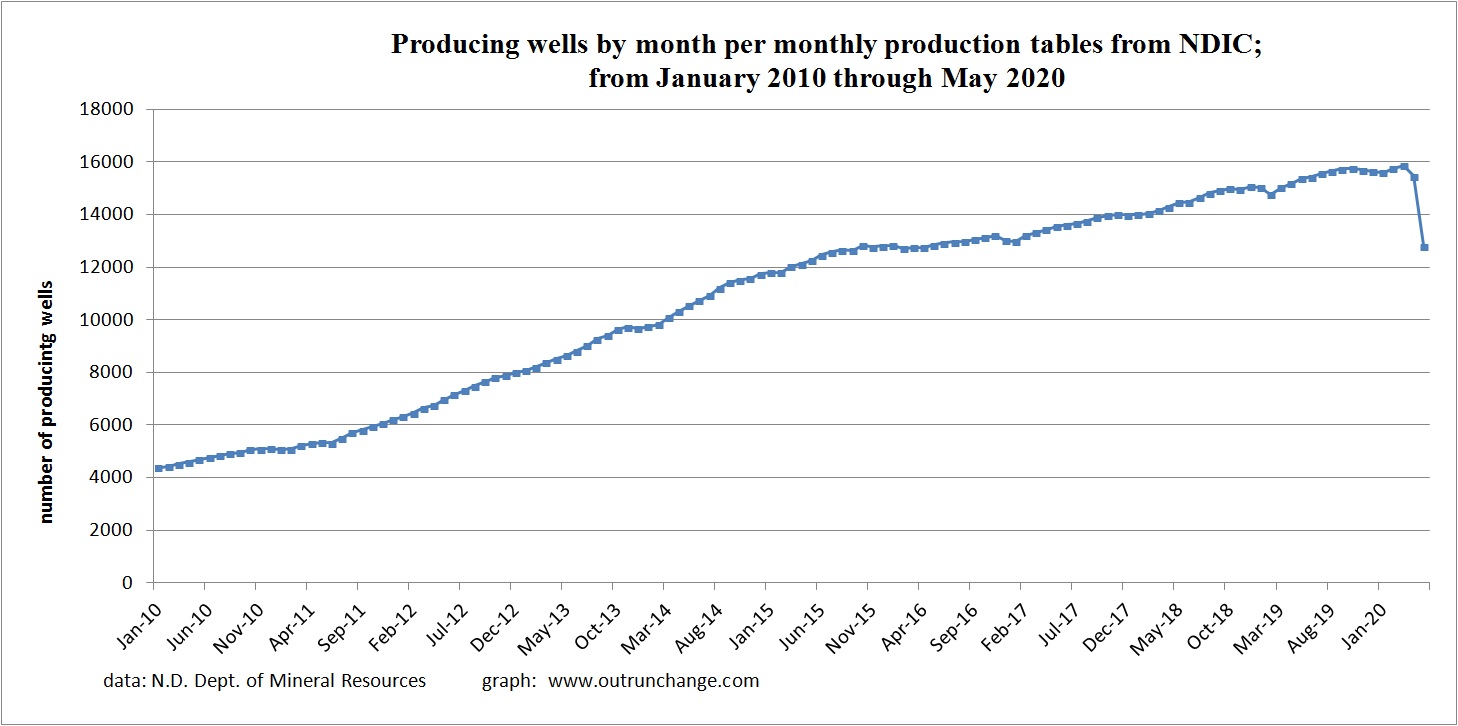
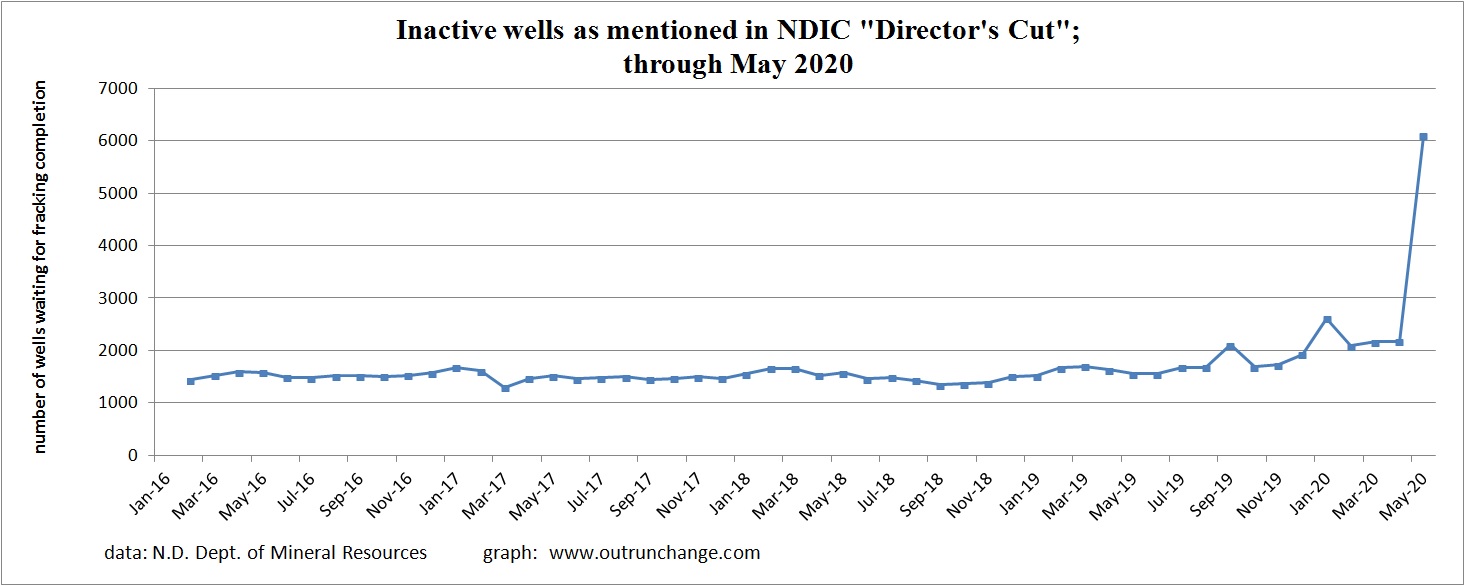
oil production will be a bit slower than you expect – access to capital will be tight – how many times will funders get burned by the collapse in prices?
Only the wells that are running part time could be ramped up quickly – and those wells amy have some damage due to decreased flow rates.
Thank you
Hi J:
Seems like it won’t take a lot of capital to get a jump in production. While in Williston the last several weeks, I picked up tidbits that production is going back up. As I drove around the area on several day trips, it seemed to me that the vast majority of pumps were in operation. Granted that is based on what was happening the moment I passed a well site, yet the pattern was quite obvious. I made the trip east of Williston on the US 2 several times and each time noticed the same thing- most wells seemed to be pumping.
Thanks for taking the time to read and comment.
Jim